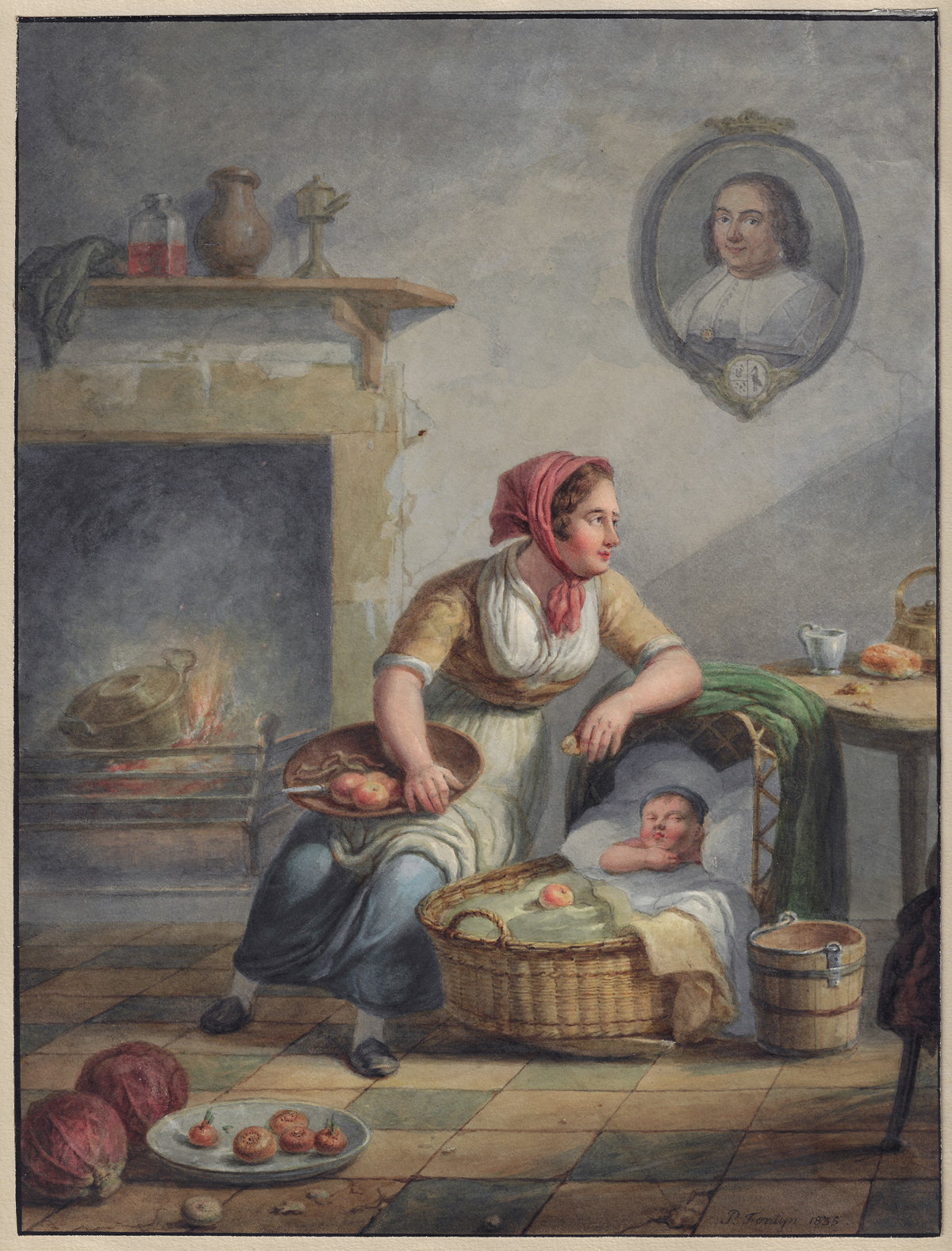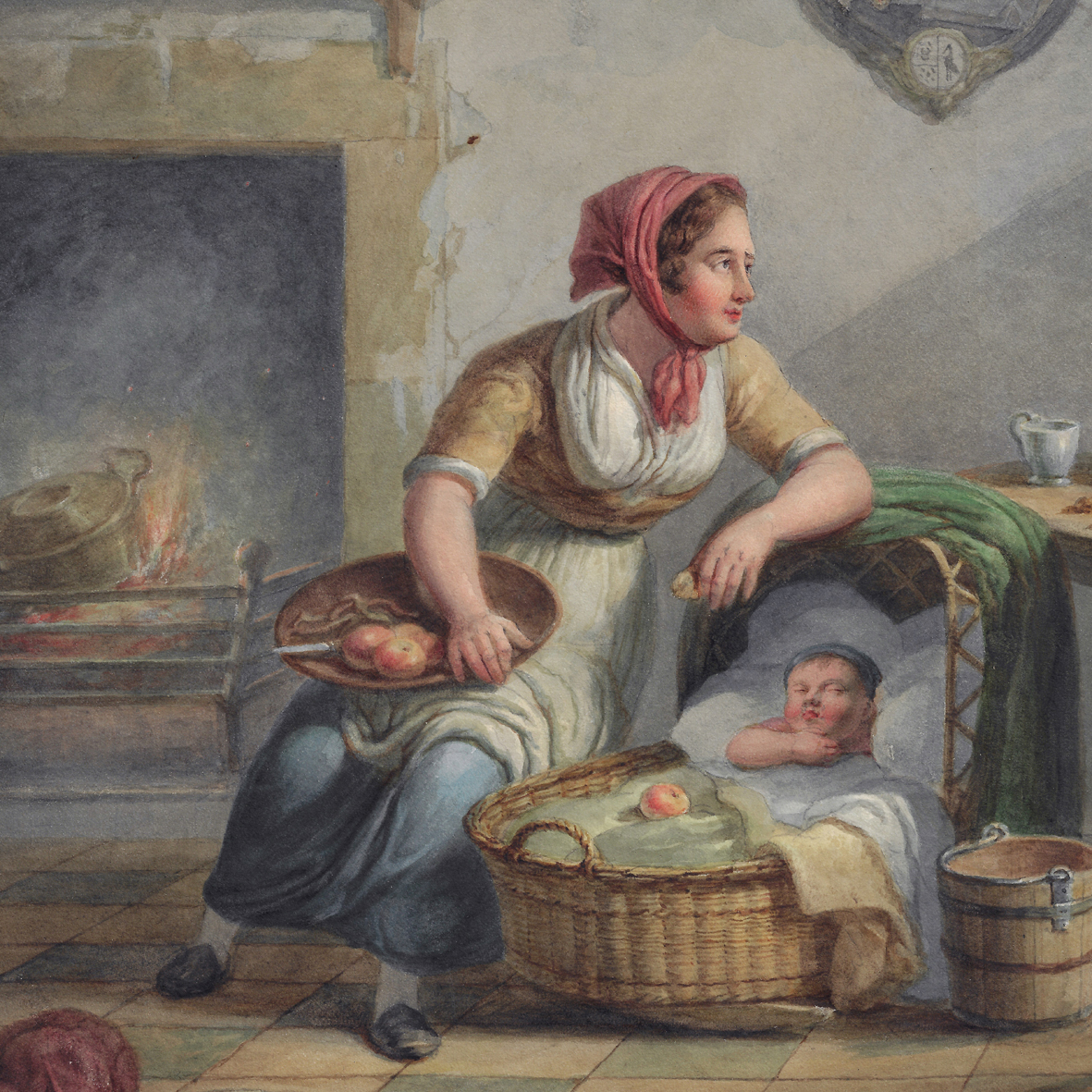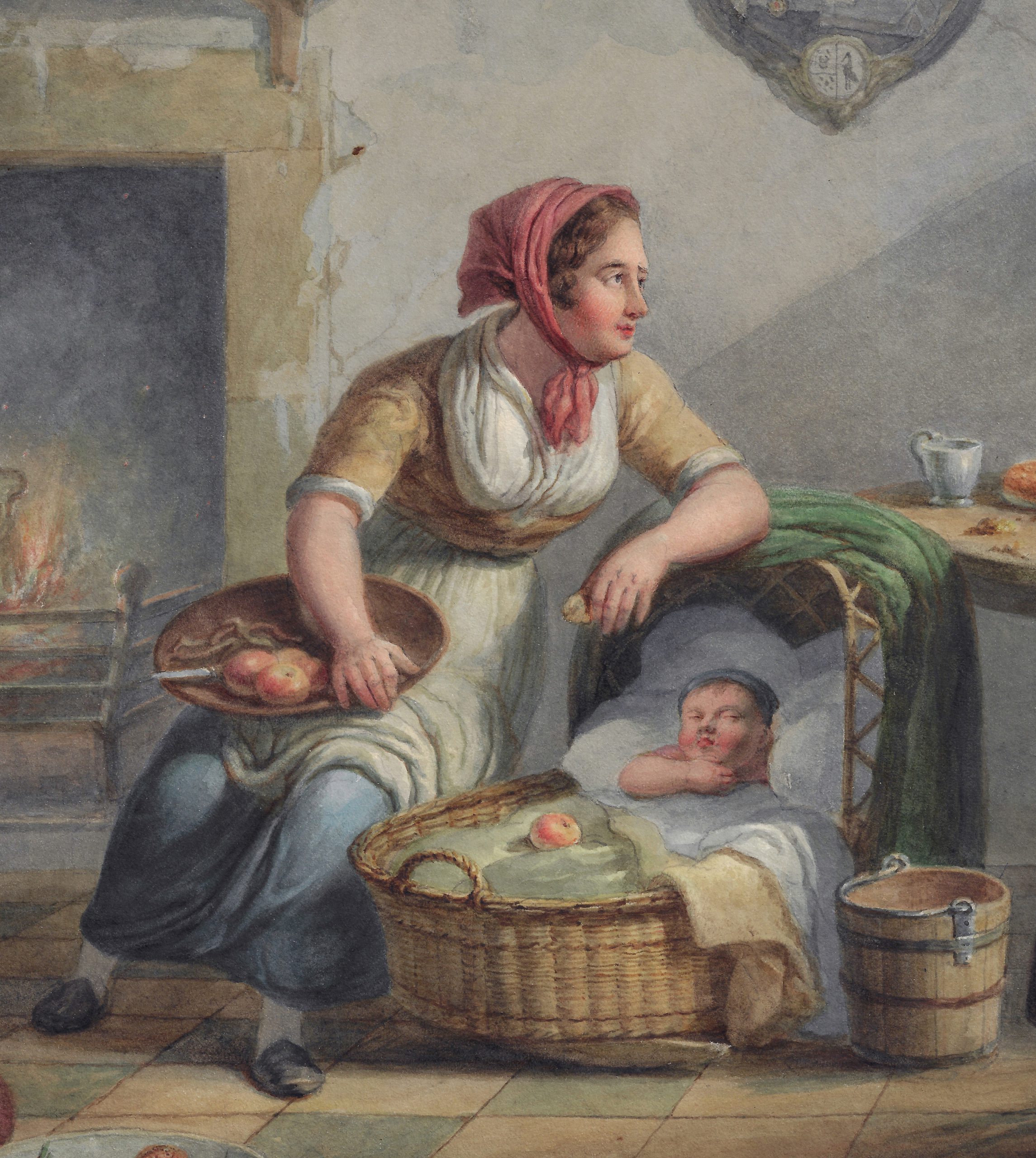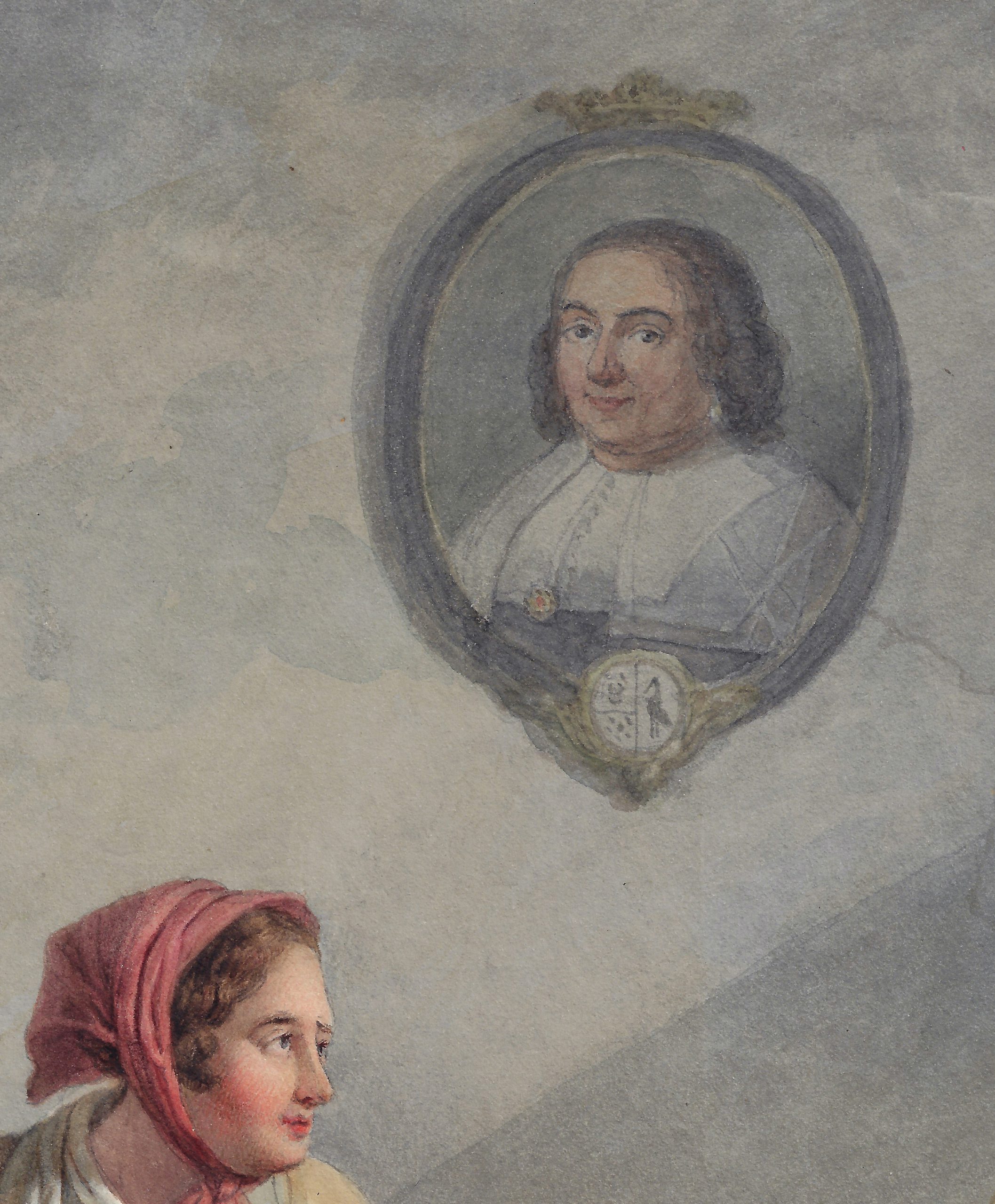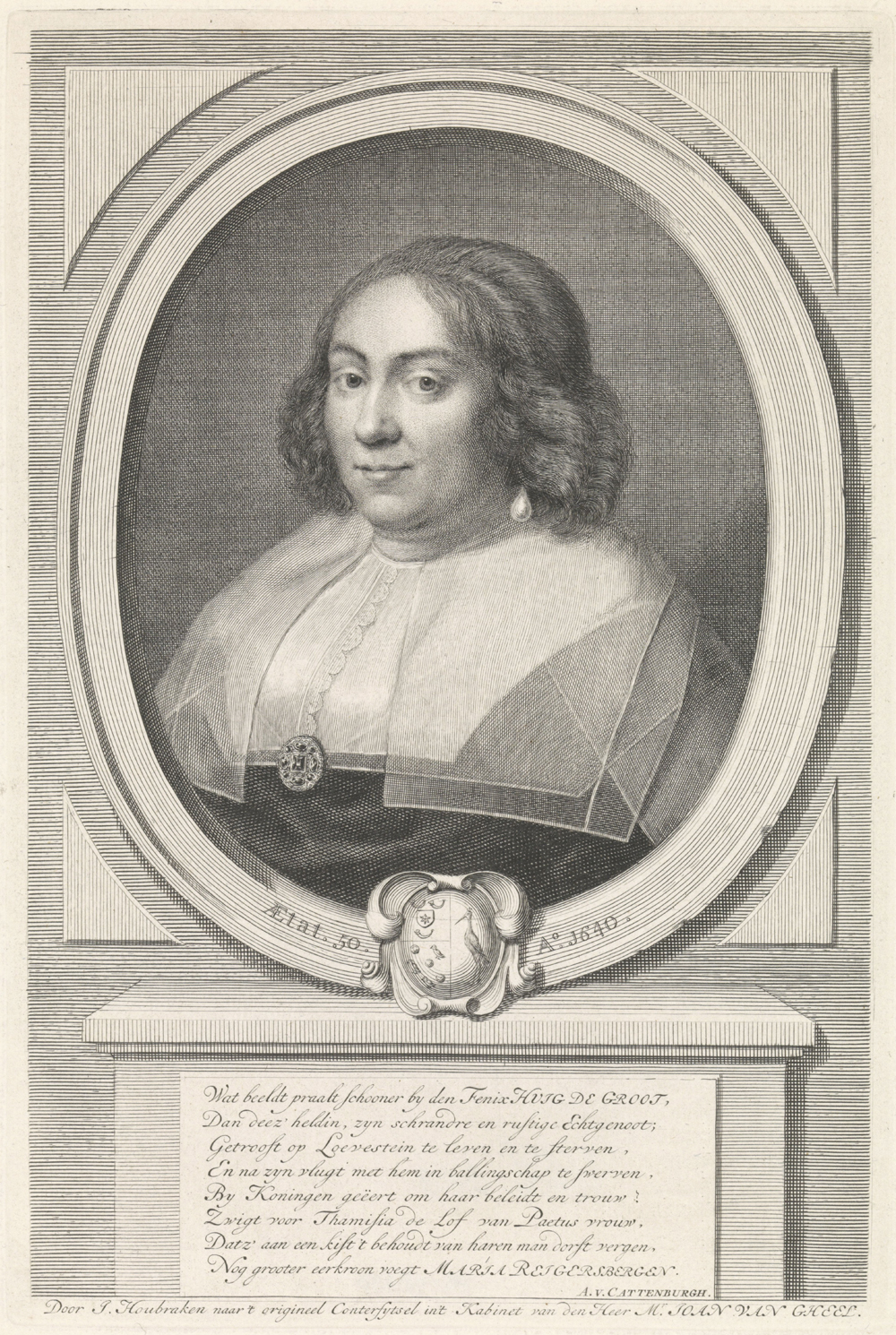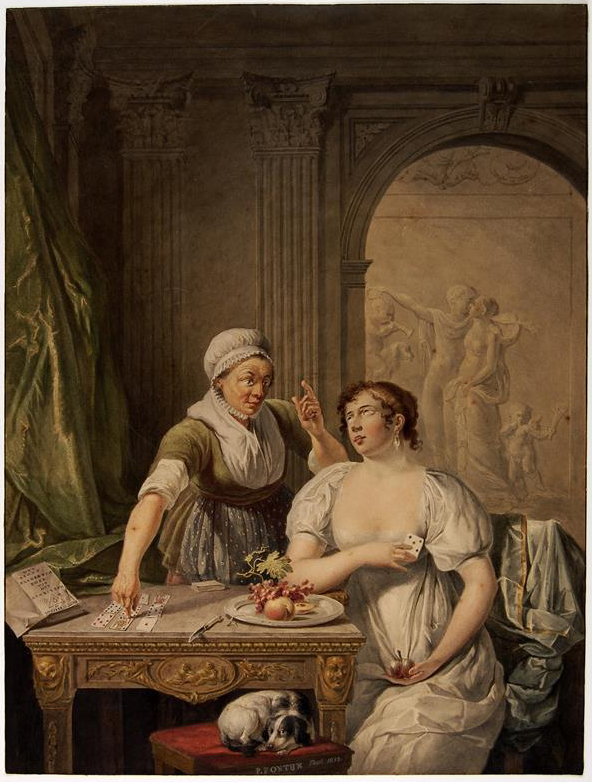PIETER FONTIJN (Dordrecht 1773 – 1839 Dordrecht)
Pieter Fontijn (Dordrecht 1773 – 1839 Dordrecht)
A Mother and Child in a Kitchen
Pencil, watercolour, black ink framing lines, 350 x 266 mm (13.8 x 10.5 inch)
Signed and dated ‘P. Fontijn 1835’ (lower right)
Provenance
Private collection, France
***
Seated by a glowing fire in a simple hearth, a young mother leans on the wickerwork cradle of her sleeping infant. She is peeling apples, lying in a bowl, while another bowl on the green-and-yellow paved floor holds a number of onions. A large lidded brass pan is balancing at a rather steep angle on the grate in the fire, which provides warmth to the mother and child. Simple household items are stowed on a plain wooden shelf over the fireplace. The mother exudes an air of calm and rosy happiness, her thoughts for a moment lingering from her housework – a image of simple contentment.
Pieter Fontijn was born in Dordrecht in 1773.1 Although his parents had intended another career path for him, he persuaded them to let him pursue an artistic education. He was initially trained in the studio of the painter of decorative ‘behangsels’ Pieter Hofman (1755–1837), and was further educated by the still-life painter Willem van Leen (1753–1825). Upon settling as an independent master in his home town of Dordrecht, Fontijn specialised in portraits in oil and miniature, which were fashionable during th period. He also produced genre pieces in the manner of Jacob and Abraham van Strij, who also lived in Dordrecht – like the Van Strij brothers, Fontijn was deeply influenced by the genre painters of the Dutch Golden Age, although he worked in a lighter palette that was typical for the early nineteenth century.
More so than works by the Van Strij brothers, genre paintings and drawings by Fontijn frequently have hidden layers, often of humorous or even semi-erotic nature. Layers of meaning are sometimes bestowed by certain objects or by paintings hanging on the walls of interiors depicted by the artist. In the case of the present large and well-preserved watercolour, depicting a simple kitchen, its crumpling walls possibly indicating a degree of poverty, the oval portrait of a wealthy lady on the wall is a dissonant: not only is its presence rather unusual in a kitchen, which were more generally decorated with still-lifes or genre scenes, but it is also distinctly more luxurious than the other rustic constituents of the room, especially is richly carved and gilded frame, crowned by a gilt coronet and with a coat-of-arms underneath. The portrait represents Maria van Reigersberg (c.1589–1653), the wife of the humanist and lawyer Hugo Grotius; as his model, Fontijn took an engraving by Jacobus Houbraken (1698–1780) after a painting by Michiel van Mierevelt (1566–1641) (fig.).2 Van Reigersberg was considered a model of Dutch national virtue during the late 18th and early 19th century, but the exact meaning of her presence in this work is elusive – is her virtue contrasted with the idleness of the mother?
Portraits by Fontijn are preserved in the collections of the Scheepvaartmuseum, Amsterdam, the Simon van Gijn Museum, Dordrecht, the Bisdom van Vliet Museum, Haastrecht and the Stedelijk Museum Roermond. Easel paintings of genre scenes are furthermore kept in the Dordrechts Museum in Dordrecht and in the Simon van Gijn Museum, also in Dordrecht.3 Works on paper by the artist are fairly rare, only a handful of examples is known, including a watercolour of a Neoclassical interior with a fortune-teller in the Dordrechts Museum, which is dated to 1812 (fig.).4
1. For the artist, see: J. Erkelens a.o., Tussen zonnegoud en kaarslicht: Dordtse meesters 1780-1840, exh. cat. Dordrecht (Dordrechts Museum), 1986, pp. 76-81.
2. An impression is preserved in the Rijksprentenkabinet in Amsterdam, plate size 265 x 177 mm, inv. no. RP-P-OB-48.450.
3. A typical example is the Interior with Two Figures in the Dordrechts Museum, panel, 59.5 x 59 cm, inv. no. DM/850/41.
4. Watercolour, 437 x 329 mm, inv. no. DM/947/T491.
